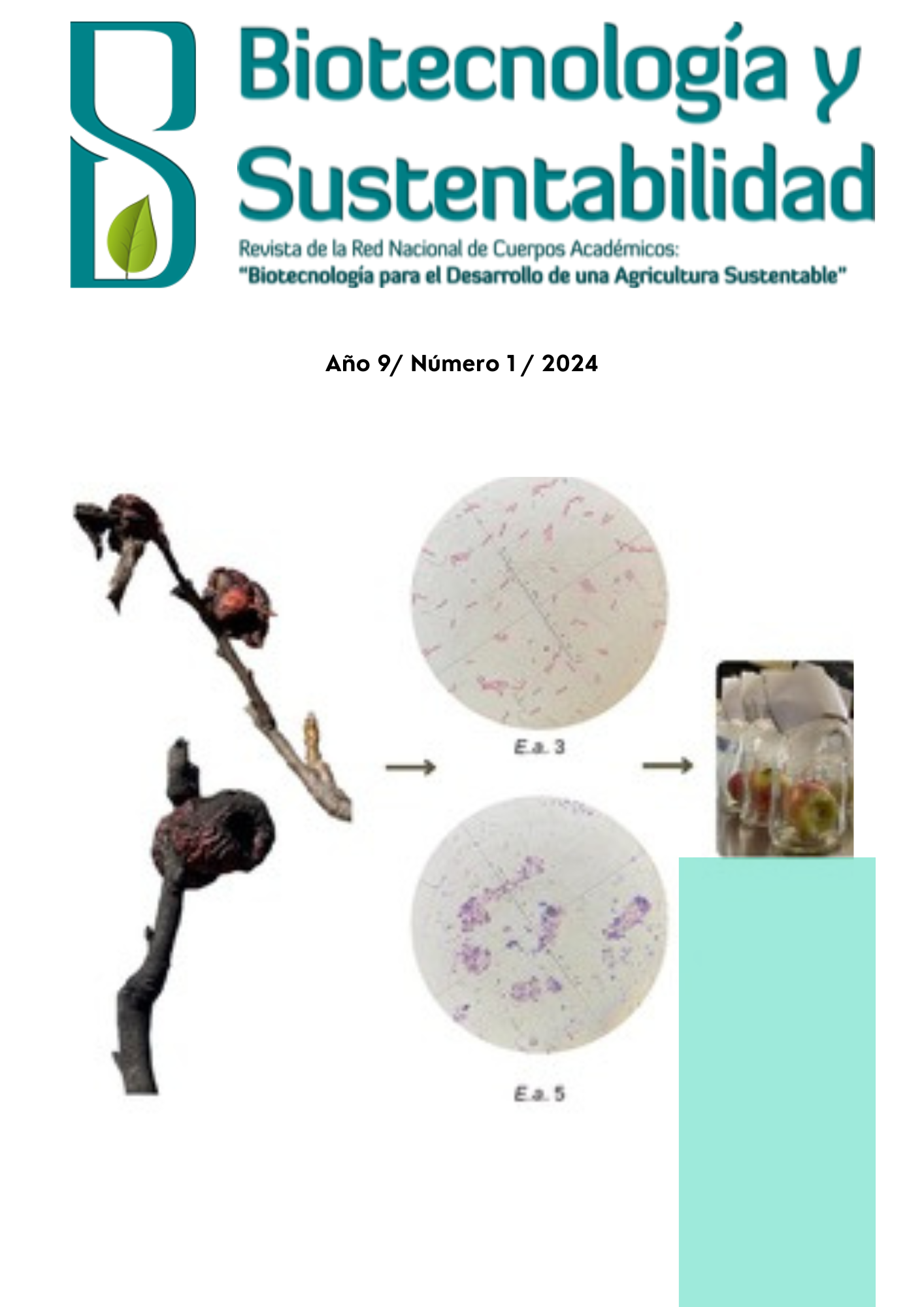In vitro inhibitory activity of Trichoderma spp. on Botrytis cinerea, causal agent of gray mold in raspberry: In Vitro Inhibitory Activity of Trichoderma spp. on Botrytis cinerea, Causal Agent of Gray Mold in Raspberry
Published 2024-12-27
Keywords
- biological control,
- rhizosphere,
- sporulation,
- antagonism
How to Cite
Abstract
Botrytis cinerea is a phytopathogen with a necrotrophic habit that affects around 200 plant species, including blueberry, strawberry, raspberry, and blackberry, which are of economic importance due to their demand in the foreign market. The application of chemical fungicides is increasingly less recommended and more restricted due to the human health and environmental pollution problems that arise from their application. Due to the above, the need arises for the use of biological control agents antagonistic to B. cinerea. In the present study, the in vitro inhibitory activity of native Trichoderma strains on the growth of B. cinerea isolated from raspberry was evaluated. Soil was collected from the rhizosphere of coffee, banana, melon, and blueberry crops, from which eight strains of Trichoderma were isolated. Antagonism tests of each Trichoderma strain on B. cinerea were carried out. The growth and sporulation rate of the Trichoderma strains, according to the analysis of variance at 24 hours after the interaction, showed a highly significant difference between the treatments for the growth variable (F=2.09; P=0.0073). At 48 hours a significant difference was shown between the treatments (F=1.95; P=0.062). While at 72 hours a highly significant difference was shown between the treatments evaluated (F=2.55; P=0.0032). Finally, it was shown that TC1 strain inhibits the phytopathogen by 77.74 %, which makes it attractive for the control of B. cinerea, the causal agent of gray mold in raspberries.


